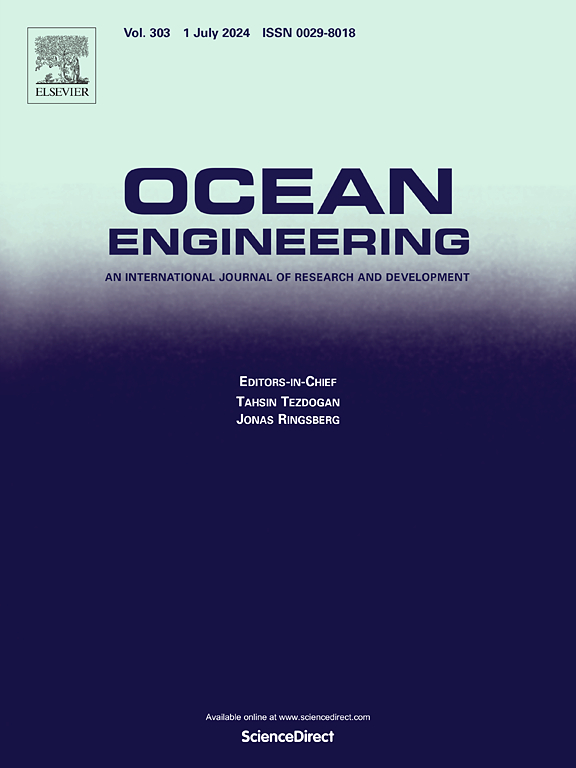Systematic design of predictive control for autonomous surface vehicles in path following with obstacle avoidance
IF 5.5
2区 工程技术
Q1 ENGINEERING, CIVIL
引用次数: 0
Abstract
A systematic procedure to design the spatial constraints for a predictive control strategy focused on path following of autonomous surface vehicles is proposed to avoid obstacles. Firstly, a systematic design algorithm is devised to generate a set of positional constraints to be imposed on the predictive controller from the map of the aquatic body and the obstacles. Secondly, a recently presented non-linear model predictive control-based guidance strategy for path following is extended to consider output constraints, such as those generated by the previous design algorithm. This controller has been shown to overcome drawbacks of other line-of-sight-based guidance laws and to enable the application of predictive strategies to the low-level controller through the computation of future references for the forward velocity and heading angle. Finally, a practical predictive strategy has been tailored to this problem to generate a simplified version of the proposed predictive controller by linearizing the model along the trajectory. Moreover, the positional constraints describing the obstacles and the aquatic body are adapted so that only linear constraints are imposed in the optimization, giving rise to a much faster implementation. The effectiveness of both proposed control strategies in navigation and obstacle avoidance in a complex and realistic scenario is illustrated in simulation, where their path-following performance and computational cost are compared.
自动地面车辆避障路径跟踪预测控制系统设计
提出了一种基于路径跟踪的自动驾驶地面车辆避障预测控制策略的空间约束设计方法。首先,设计了一种系统的设计算法,从水体和障碍物的地图中生成一组位置约束,并施加到预测控制器上。其次,对最近提出的一种基于非线性模型预测控制的路径跟踪制导策略进行了扩展,使其考虑了先前设计算法产生的输出约束。该控制器已被证明克服了其他基于视线的制导律的缺点,并通过计算未来的参考速度和航向角,使预测策略能够应用于低级控制器。最后,针对该问题定制了一种实用的预测策略,通过沿轨迹线性化模型来生成所提出的预测控制器的简化版本。此外,对描述障碍物和水体的位置约束进行了调整,以便在优化中只施加线性约束,从而更快地实现。通过仿真验证了这两种控制策略在复杂现实场景下的导航和避障效果,并比较了它们的路径跟踪性能和计算成本。
本文章由计算机程序翻译,如有差异,请以英文原文为准。
求助全文
约1分钟内获得全文
求助全文
来源期刊

Ocean Engineering
工程技术-工程:大洋
CiteScore
7.30
自引率
34.00%
发文量
2379
审稿时长
8.1 months
期刊介绍:
Ocean Engineering provides a medium for the publication of original research and development work in the field of ocean engineering. Ocean Engineering seeks papers in the following topics.
 求助内容:
求助内容: 应助结果提醒方式:
应助结果提醒方式:


